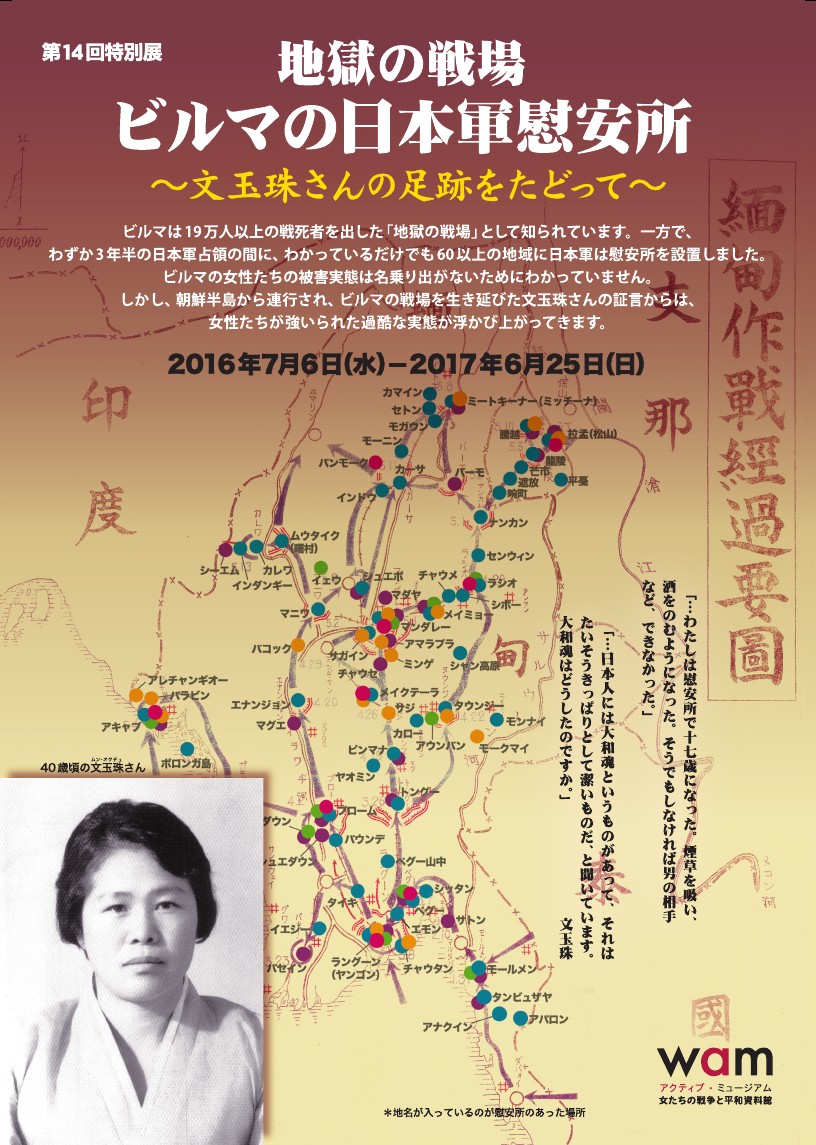The 14th Special Exhibition: Battlefield from Hell — Japanese Comfort Stations in Burma* Tracing the Footsteps of MUN Ok-ju

The invading Japanese military briefly seized Burma in January of 1942 only to be thoroughly routed in the counterattack of the allied forces whose overwhelming superiority in troops and resources forced a series of continuing losses and retreats. Countless soldiers died agonizingly from starvation, battle wounds and disease until the front came to be known as the “battlefield from hell.”
Even on a battleground as horrific as Burma, however, we now know that the Japanese military set up comfort stations in no less than 60 different districts. The women and girls made into “comfort women” were taken from Korea, China, Taiwan, Japan and Burma. Bombed from above while being forced into sex acts, the women were swept up in the conflict and fled along with panicking Japanese divisions.
MUN Ok-ju was one of the Korean “comfort women” who accompanied a Japanese battalion across the “battlefield from hell” and miraculously survived. The ferocity of Mun’s will and her astonishing ability to stay alive are breath-taking, but what emerge from tracing her footprints are the reckless abandonment that governed the Burmese front and an image of the cruel lives that the women were forced to bear.
■ Exhibition Hall No. One
“Comfort Women”: Issues and Basic Keys to Understanding
- Understanding the Japanese Military “Comfort Women” System
- The Reality of “Comfort Women’s” Suffering, Postwar Experiences and Soldiers’ Testimonies
■ Exhibition Hall No. Two
The Burmese Front and “Comfort Women”
- Map of Japanese Invasion of Burma with Comfort Stations—based on victims’ testimonies, records kept by Supervisors of Comfort Stations, former Soldiers’ accounts and public documents
- Testimony of MUN Ok-ju with Personal History
- Suffering and Injuries endured by Korean, Taiwanese, Chinese and Japanese Women made into “Comfort Women”
- Burmese women and Sexual Violence
- Postwar Burma and Japan
Global Movements connected with “Comfort Women” Issues
- Problems in the Joint “Agreement” between Japan and South Korea
- Responses of the Japanese Government and of the Nations of former “Comfort Women”
*Regarding National Names: Although the Burmese military regime changed the nation’s name to Myanmar in 1989, the current exhibit employs the name “Burma,” which was used during the period when the comfort stations were created.
*About the map on the brochure cover: this is a version of the “Map of Progress of Burma War Strategies” (1942, Army Ministry Printing), housed in the National Diet Library, that has been modified to indicate the locations of comfort stations.
- Exhibition Category: sp

